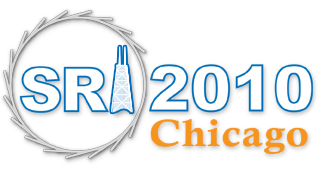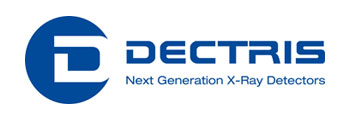Workshop 2
← back to Complete Program
Coherence preserving optics for high brightness light sources
September 21, 2010 • APS Conference Center — Room E1100/E1200
9:00 am — 11:40 am & 1:00 pm — 5:15 pm
Organizers: Andrei Fluerasu (NSLS-II) and Kon Kaznatcheev (NSLS-II)
The last decade showed rapid and remarkable progress in generating coherent x-rays. Novel experimental techniques emerged, relying on x-ray coherence either for scattering (e.g., speckle recording in x-ray correlation spectroscopy), or for imaging (e.g. scanning x-ray microscopy, phase-contrast- and coherent-diffraction- imaging). They have greatly facilitated the precise measurement of a structure and of the time- evolution of nanometer-sized objects. New facilities under construction or planned will incorporate peak brightness’s several orders- of-magnitude higher than present-day ones. Will this advancement rival the discovery of the laser effect in the late sixties and the consequent breakthrough? In part, the answer to this question depends upon developments in x-ray optics, and hence, it is timely to review the status of “coherence preserving” x-ray optics. Accordingly, this workshop will cover four paramount topics:
- Requirements for optics imposed by experimental techniques that rely on light coherence. Novel optical schemes, and apparatus.
- Theoretical framework for describing source coherence, and the propagation of mutual coherence, along with analytical- and numerical- modeling.
- Current status of coherence-preserving optics.
- Measurements of spatial- and temporal-coherence.
This full-day workshop is aimed to draw together engineers and scientists at the forefront of advancing x-ray optics and researchers proposing novel experimental techniques resting on x-ray light coherence.
Agenda
| Experimental techniques that rely on light coherence: Requirements for optics |
|---|
| 9:00 – 9:35 | Malcolm Howells (ALS, LBNL)
Coherence requirements imposed by new SR techniques |
| 9:35 – 10:10 | Yuri Shvyd’ko (APS, ANL)
X-Ray free-electron laser oscillator and challenges for X-ray optics |
| 10:10 – 10:30 | Break |
| Theoretical framework for source coherence description, Mutual coherence propagation |
|---|
| 10:30 – 11:05 | Mark Sutton (McGill University)
Investigation of Coherent X-ray Propagation and Diffraction
The ABCD matrix method from optics is used to calculate the mutual coherence function which describes the coherence of a beam. This is used to understand the effect of optical elements on the coherence of synchrotron beams. Measurements of the focal properties of a zone plate, speckle sizes and contrasts measured by coherent x-ray diffraction from a disordered Fe3Al crystal are presented. View Presentation |
| 11:05 – 11:40 | Oleg Chubar (NSLS-II, BNL)
Partially coherent SR sources, theoretical description beyond Gaussian approximation, wave propagation analysis |
| 11:40 – 1:00 | Lunch |
| Current status of coherence-preserving optics |
|---|
| 1:00 – 1:45 | Valeriy Yashchuk (ALS, LBNL) X-ray mirror design, fabrication, and metrology: Current status and perspectivesThis talk will review the current status and perspectives of x-ray mirror design, fabrication, and metrology to respond to the demand for optics for next generation light sources. The presentation will be based on our own* experience, as well as on materials and discussions from two recent meetings: the International Workshop on X-ray Mirror Design, Fabrication, and Metrology (September 22-24, 2009, Osaka University, Suita, Osaka, Japan), and the EuroFEL Workshop on Photon Beamlines and Diagnostics (June 28–30, 2010, DESY, Hamburg, Germany).
*in collaboration with Kazuto Yamauchi (Osaka University, Japan)
|
| 1:45 – 2:15 | Tom McCarville (LLNL) Engineering design and metrology for the LCLS high-energy X-ray mirror systemThe high energy X-ray mirror system deployed in the Linac Coherent Light Source at SLAC National Accelerator Laboratory was designed to preserve coherence of the FEL beam while providing accurate and stable pointing to down-stream experiments. This talk* will describe the mirror system opto-mechanical requirements and design, and the metrology used to verify the requirements would be met.
*in collaboration with Mike Pivovaroff( LLNL), Regina Soufli (LLNL), Peter Stefan (SLAC)
|
| 2:15 - 2:45 | Riccardo Signorato (Bruker)
Adaptive optics: approaches, current performance, and perspectives |
| 2:45 – 3:20 | Christian David (PSI, Switzerland) Diffractive optics for high brightness x-ray sourcesThe advent of a new generation of x-ray sources with very high brilliance and coherence enable new insights in many different fields of science. However, all optical components used at such sources need to fulfill very stringent requirements in order to preserve the beam quality. Diffractive x-ray optics can be used to control x-ray waves with sub-wavelength precision. We present recent developments in context with applications such as nanofocusing, imaging, coherence measurements, optics metrology, and wavefront sensing. |
| 3:20 – 3:50 | Alexander Rack (ESRF, France) On the performance of multilayers used as monochromators for coherent X-ray imaging with hard synchrotron radiation
We present a systematic study in which multilayers of different composition (W/Si, Mo/Si, Pd/B4C, Ru/B4C, W/B4C), periodicity (from 2.5 to 5.5 nm), and numbers of layers have been characterised. Particularly, we investigated the intrinsic quality (roughness and reflectivity) as well as the performance (flatness and coherence of the outgoing beam) as a monochromator for synchrotron radiation hard X-ray micro-imaging. The results indicate that the material composition is the dominating factor for the performance. View Presentation |
| 3:50 – 4:15 | Break |
| Measurements of spatial and temporal coherence |
|---|
| 4:15 – 4:45 | Kenneth Goldberg (CXRO, LBNL)
At-wavelength Interferometric KB Mirror Alignment and Optimization
At LBNL we have developed a flexible test chamber dedicated to research on the methodologies of at-wavelength mirror metrology. During mirror alignment optimization, we are performing inter-comparisons of various techniques including scanning-slits, knife-edge, and grating-based lateral shearing interferometry. Our goals are to develop broadly applicable in situ tests to enable beamline mirrors to achieve diffraction-limited performance for x-ray nanofocusing, and to close the loop with ex situ visible-light mirror optimization.”
*In collaboration with Valeriy Yashchuk, Sheng Yuan, Tony Warwick, and Rich Celestre (ALS, LBNL). View Presentation |
| 4:45 – 5:15 | Ken Evans-Lutterodt (NSLS, BNL)
Coherence measurements with a bi-prism |




